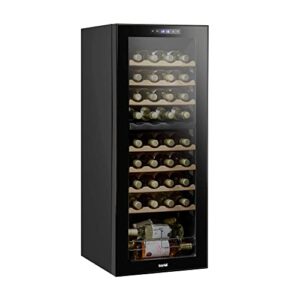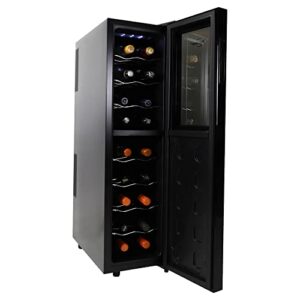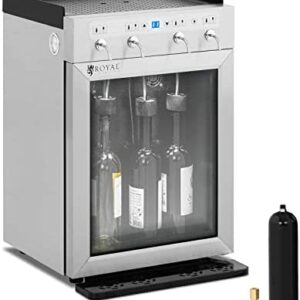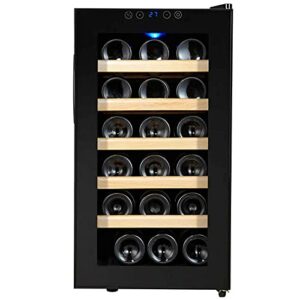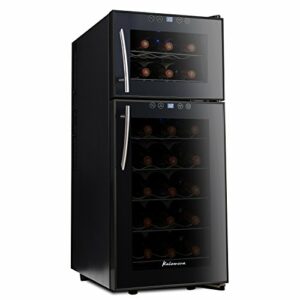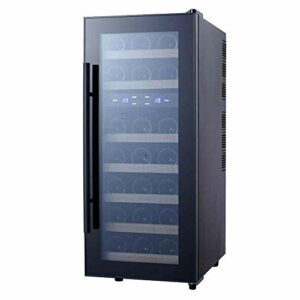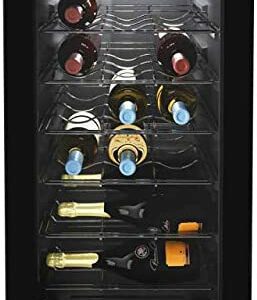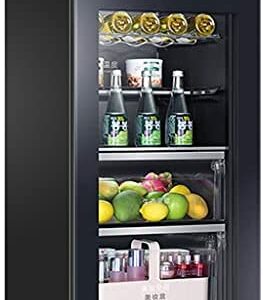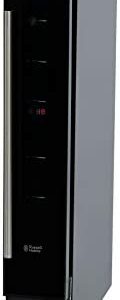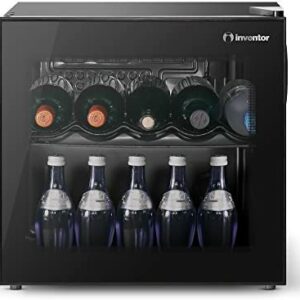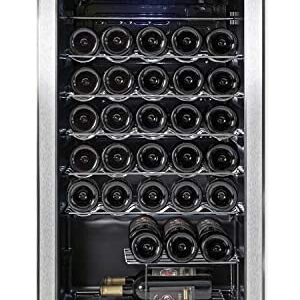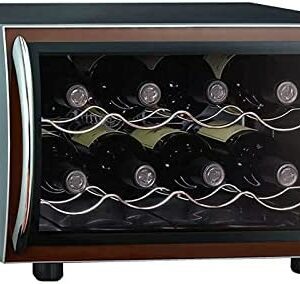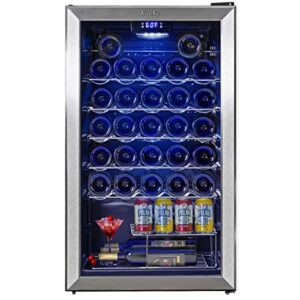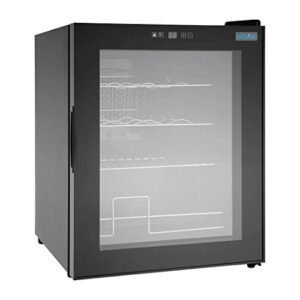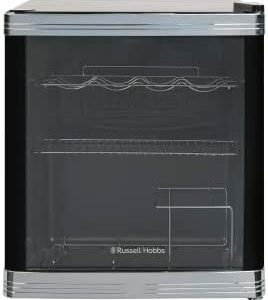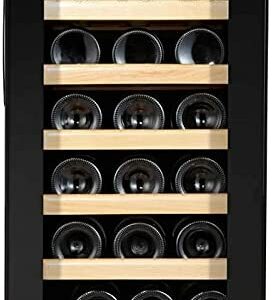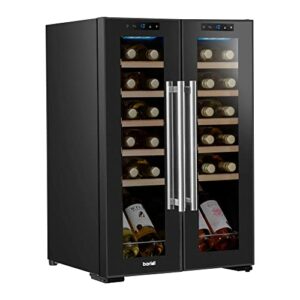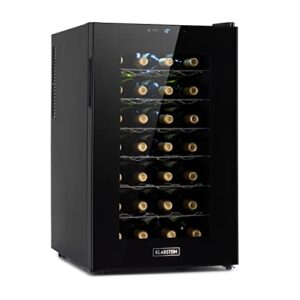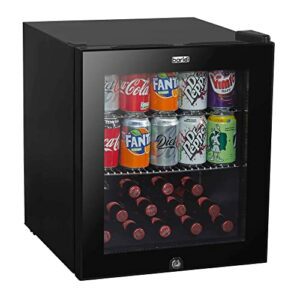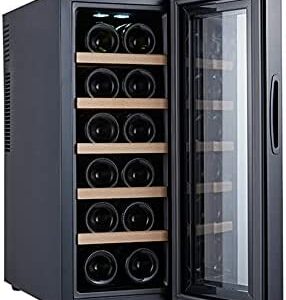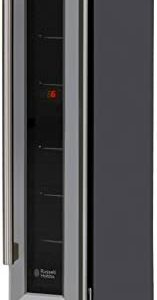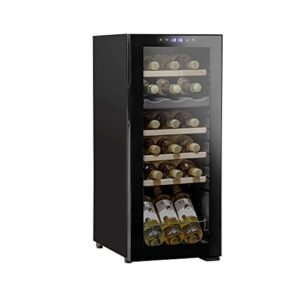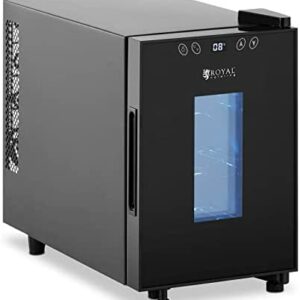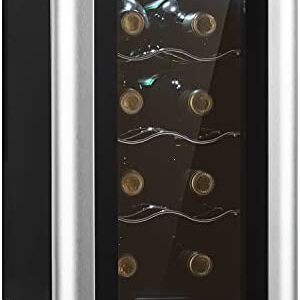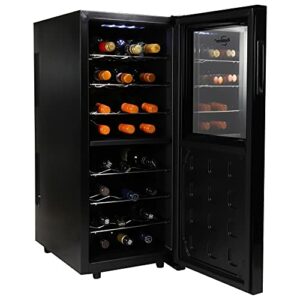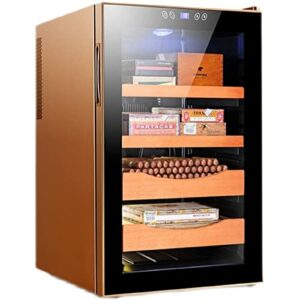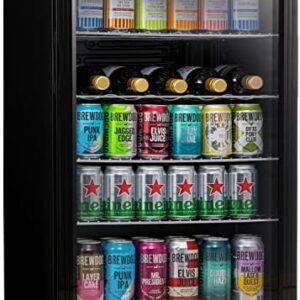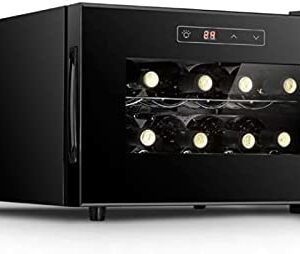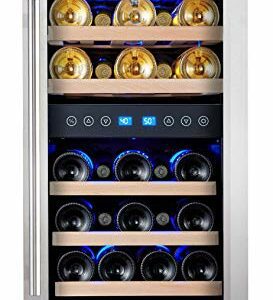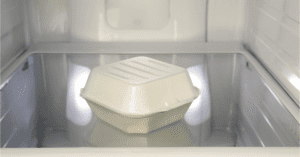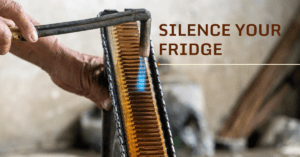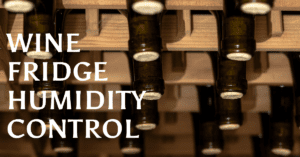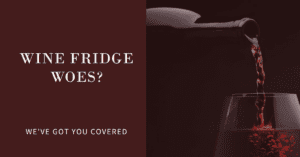Wine fridges
Wine fridges are small refrigerators specifically designed to store wine at ideal temperatures and humidity levels. Unlike a regular refrigerator, a wine fridge minimizes light exposure and vibration, which can damage wine over time.
Wine Storage Best Practices
Storing wine properly is essential to preserving its taste and quality. Here are some key factors to consider:
- Temperature: Temperature control is crucial. Red wines typically thrive in cooler temperatures (around 55°F – 60°F), while white wines prefer slightly cooler settings (45°F – 50°F). Sparkling wines and dessert wines have their own ideal temperature ranges. Understanding these variations is vital for optimal storage.
- Humidity: Maintaining consistent humidity levels (around 60% – 70%) helps prevent corks from drying out and shrinking, which can allow air to enter the bottle and spoil the wine.
- Light Exposure: Direct light exposure can deteriorate wine over time. Look for wine fridges with UV-protected glass doors to minimize light penetration.
- Vibration: Excessive vibration can disturb the sediment in some wines, affecting their taste. Opt for wine fridges with vibration dampening technology for a stable storage environment.
Understanding Wine Fridge Types
Wine fridges come in various styles and configurations to suit different needs and preferences. Here’s a breakdown of the most common types:
- Freestanding Wine Fridges: These versatile units offer a larger storage capacity and come in a variety of sizes and finishes to match your décor. They’re ideal for dedicated wine storage areas or kitchens with ample space.
- Undercounter Wine Fridges: These compact units are designed for seamless integration into your kitchen cabinetry. They’re perfect for smaller spaces or those who prefer a discreet storage solution.
Single Zone vs. Dual Zone Wine Fridges:
The number of temperature zones determines the types of wine you can store simultaneously.
- Single Zone Wine Fridges: Maintain a single temperature throughout the unit, suitable for those who primarily store one type of wine.
- Dual Zone Wine Fridges: Offer two independent temperature zones, allowing you to store red and white wines at their ideal temperatures within the same fridge.
Shop by Type
Editor's Picks: Best Wine fridges
We've selected these fridges for their size, features, and value. Find the perfect one for your needs!
Displayed by Best Ratings. See how we rate fridges: link here
Showing 1–30 of 72 results
-
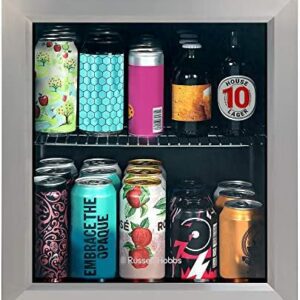
Russell Hobbs RHGWC3SS Table Top Wine Fridge with Glass Door
-

Koolatron Urban Series 18 Bottle Slim Dual Zone Wine Fridge
-

Royal Catering Wine Dispenser Fridge
-

AMZOPDGS Drinks Fridge – Mini Bar Refrigerator with Glass...
-

Kalamera 21 Bottle Dual Zone Freestanding Thermal Wine Fridge
-

Cavecool Wine Cooler – 21 Bottle Wine Fridge with Two Temperature...
-

CANDY CWC021MKN Freestanding Wine Cooler – 85L Black
-

ATAAY Large Home Ice Bar – Free-Standing Refrigerator and...
-

Russell Hobbs RHBI7WC1 7-Bottle Wine Fridge
-

Inventor Vino Wine Cooler 43L: Compact Wine Fridge with Glass...
-

SMETA Wine Fridge – 33 Bottle Wine Cooler with Glass Door...
-

8 Bottle Wine Cooler Refrigerator with Lock & Digital Temperature...
-

SMETA Countertop Wine Cooler 33 Bottle
-

Polar C-Series Table Top Wine Fridge -16: Compact and Stylish...
-

Russell Hobbs RHGWC1B Table Top Wine/Drinks Cooler with Glass...
-

yunyun Drinks Fridge – 18 Bottle Wine Cooler Mini Bar Refrigerator
-

Baridi 24 Bottle Dual Zone Wine Cooler – Fridge with Touch...
-

Klarstein Barolo 28 Uno Wine Refrigerator – 70 Litres/28...
-

Wine Cooler with Glass Door, 12-Bottle Free-Standing Refrigerator
-

Russell Hobbs RHBI7WC1SS Wine Fridge
-

Royal Catering RC-WC20 Counter Fridge – Steel Wine Fridge...
-

Klarstein Reserva Slim Uno Wine Refrigerator – 23L/8 Bottles,...
-

Koolatron 24 Bottle Dual Zone Wine Cooler – Thermoelectric...
-

Small Electric Cooler Humidor for Wine & Beverages – Thermoelectric...
-

Subcold Super115 LED – Under-Counter Fridge with LED Light...
-

Small Wine Cabinet Refrigerator Black Freestanding Countertop...
-

Phiestina Dual Zone Wine Cooler Refrigerator – 33 Bottle...
Choosing the Best Wine Fridge: A Beginner’s Guide
New to the world of wine? Here are some essential factors to consider when selecting your first wine fridge:
- Size and Capacity: Determine how many bottles you plan to store. Wine fridges range from compact countertop models holding a few bottles to large freestanding units accommodating hundreds.
- Essential Features: Look for fridges with basic features like adjustable shelves, interior lighting, and temperature control. Consider features like automatic defrosting for added convenience.
- Budget: Wine fridges come in a variety of price points. Define your budget and prioritize features that align with your needs.
Advanced Features and Long-Term Storage
For seasoned wine collectors, here’s a deeper dive into features that enhance long-term storage:
- Humidity Control: Invest in a wine fridge with built-in humidity control to ensure optimal cork preservation and prevent spoilage.
- Programmable Settings: Precise temperature control is crucial for long-term storage. Look for fridges with programmable settings to maintain consistent temperatures.
- Lockable Doors: For valuable wine collections, consider fridges with lockable doors for added security and peace of mind.
- High-End Features: Explore premium features like charcoal filtration for odour control, multiple shelving configurations for customizable storage, and ambient light options to showcase your collection.
FAQs: Your Guide to Worry-Free Storage
Here at Wine Fridge Hub, we understand you might have questions about wine fridges. This FAQ section is designed to address some of the most common inquiries to ensure you can enjoy your wine fridge with confidence.
General Questions:
- Are wine fridges energy-efficient?
Wine fridges are generally more energy-efficient than standard refrigerators. This is because they maintain a more consistent and cooler temperature range specifically suited for wine storage. Many modern wine fridges also utilize energy-saving features like LED lighting and automatic defrost cycles.
- What type of electrical outlet do I need for my wine fridge?
Most wine fridges require a standard 120-volt household outlet. However, it’s always recommended to consult your user manual for specific recommendations. For larger or high-powered wine fridges, a dedicated circuit might be necessary for optimal performance.
- How often should I clean my wine fridge?
It’s recommended to clean your wine fridge every 3-4 months to maintain proper hygiene and prevent the build-up of mold or mildew. Unplug the fridge, remove any spills promptly, and wipe down the interior with a damp cloth and a mild cleaning solution.
Temperature and Storage:
- What temperature should I set my wine fridge to?
The ideal temperature for your wine fridge depends on the type of wine you plan to store most frequently. Red wines generally thrive between 55°F – 60°F, while white wines prefer cooler settings of 45°F – 50°F. Sparkling wines and dessert wines have their own ideal temperature ranges, so be sure to research the specific needs of your collection.
- Can I store food in my wine fridge?
Wine fridges are specifically designed for wine storage and might not maintain consistent enough temperatures for safe food storage. Food can introduce strong odors and bacteria that can potentially spoil your wine. It’s best to dedicate your wine fridge solely to wine storage.
Troubleshooting:
- My wine fridge is making noise. Is this normal?
A slight hum is normal for any refrigerator, including wine fridges. However, if the noise seems excessive or unusual, consult your user manual or contact the manufacturer for troubleshooting steps.
- My wine fridge isn’t cooling properly. What should I do?
First, ensure the temperature setting is correct and the fridge is plugged in and receiving power. Check the door seal for any gaps that might allow cool air to escape. If the issue persists, refer to your user manual or contact the manufacturer for further assistance.
